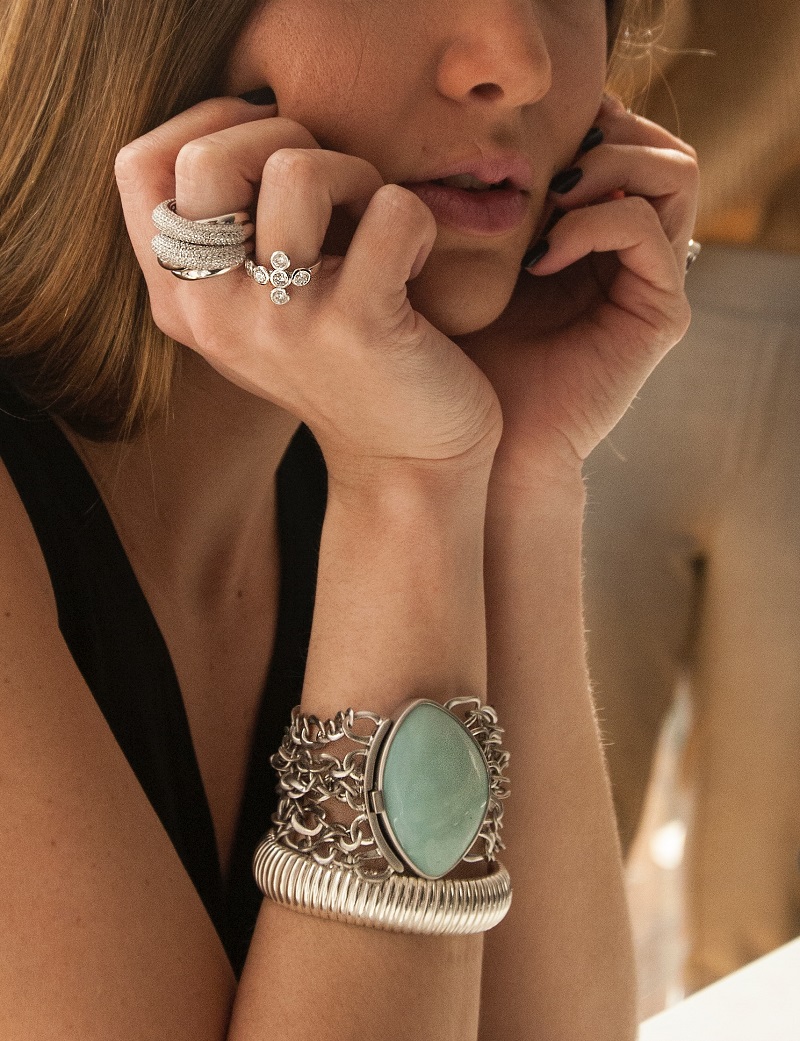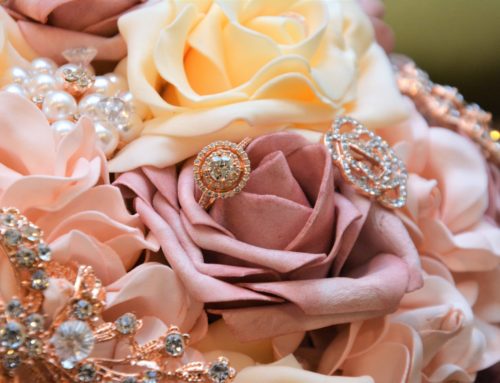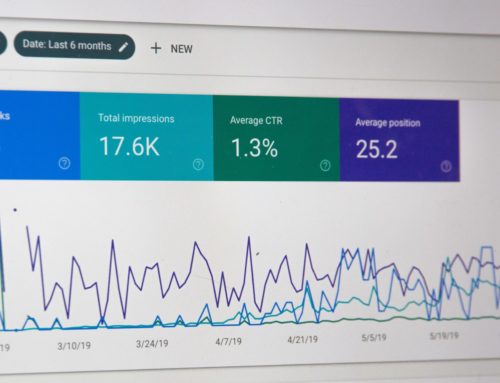After a short decline during the economic recession, the jewelry business made a speedy comeback and is now more profitable than ever. According to a McKinsey analysis, annual global sales are at about €148 billion, with a prospective growth to €250 billion by 2020. These numbers paint the picture of a jewelry market full of opportunities, but, for e-commerce jewelry business owners, things aren’t that simple. Because the market no longer belongs just to jewelry groups, now you also have competition from international apparel brands and national retail brands. To grow your jewelry business, you need to stay up to date with the latest market trends, build a firm connection with the audience, and create a strong online identity for your brand.
Whether you sell rare fine jewelry or stock your online store with new trendy pieces every week, it’s important to find your market segment and consolidate the pillars of effective online marketing.
It All Starts With a Great Website
In 2018, more than 29 million people purchased jewelry every day, so starting a jewelry business without even considering the possibility of an online store can set you back. Although you can use platforms such as eBay, Amazon, or Etsy to sell your products, your own e-commerce store might serve you better in the long run.
In the beginning, large e-commerce shops can help you hit the ground running. An Etsy store, for instance, is a convenient out-of-the-box solution. You don’t have to invest anything in design and development and you get instant exposure to an audience that trusts you because they trust Etsy. However, once your jewelry brand grows, you may find yourself to be limited by the platform’s policy, design, and SEO options. Then there’s also the fact that the media tends to take brands more seriously if they have their own domain, whereas Etsy, eBay, or Amazon are associated with small providers.
That being said, a website will help you grow your jewelry brand and boost online exposure only if it’s well-designed and looks professional. Here are a few tips to help you build an online jewelry store that converts:
Have an Intuitive Website Structure
In the same way that you wouldn’t purchase anything from a physical store where all the products are piled into one place with no logic whatsoever, you can’t expect to have a high conversion rate if your online store isn’t organized in intuitive categories. Although the jewelry industry puts a heavy focus on aesthetics, an intuitive structure is more important than fancy web design. Clients need to find items easily on your website, so think of a logical hierarchy.
In general, jewelry websites are categorized after the main types of jewelry items (rings, necklaces, earrings, etc.), but, depending on your exact product portfolio, you might want to add other categories and subcategories as well.
For example, the Cartier website has main categories in the top menu for jewelry, watches, and engagement rings, but if you hover over the jewelry category, you’ll see subcategories based on collections and jewelry types.
To draw attention to your new products, make sure you feature a New In category and, as always, the Sales category is also a must if you want to attract visitors looking for a bargain.
Choose a Simple Web Design
Although it can be tempting to reflect the glamour and intricacy of the jewelry items in your design, choosing a simple, minimal website design can help you achieve more with less:
- Minimal web design delivers greater performance by reducing page loading time. Cluttering your jewelry web design with too many elements will slow down your page and a one-second delay can cause your conversion rate to drop by 70%.
- Minimal web design looks great on all devices, from laptops to mobiles.
- Minimal web design doesn’t distract visitors from your products and lets them shine. When products are set against a simple background and there aren’t any elements that clash, people are likelier to pay attention to them.
Highlight Your Products Through Quality Images
In a land-based jewelry store, clients can look at your products carefully and from all angles, and your online store has to mimic that experience as closely as possible.
Each and every product needs to have several clear, professional photos, both with a model wearing it and with detailed close-ups. Since many jewelry items have intricate designs and small stones, you should also consider adding a zoom-in feature so that clients know exactly what they’re buying.
The Importance of SEO
Having a professional online store for your jewelry business is a great start. But that’s just the first step. In an increasingly competitive online environment, you need to use the best SEO tactics so that search engines index your website and display it among the first search results.
Although you can increase website traffic and conversion through paid ads and social media marketing, organic search is usually the main source of website traffic. People still use mostly search engines, primarily Google, to find brands, and you need to make sure your website has all that it takes for bots to crawl it.
E-commerce SEO has many intricacies and you will discover that, for the most part, finding the right long-term strategy is a matter of persistence, trial, and error. But before you get to them, you need to consider these basics:
Keyword Research
Every professional SEO strategy should start with keyword research. One can even argue that without keywords, there is no SEO and you’re just wandering aimlessly in the dark. Before considering any optimization technique, establish the main keywords that describe your niche, as well as the relevant keywords for each page.
Optimize META Tags and Headers
Once you have a list of keywords for each page on your site, you have to make sure these keywords can also be found in the META tags and headers. However, keep in mind that you shouldn’t spam with these keywords and use them too much. Instead, use a combination of main keywords, combined with related phrases.
Optimize URLs
URLs need to take keywords into account as well. Include the product name, main keyword, category, and subcategory, separated by hyphens. Here’s another example from Cartier:

Write Unique Product and Category Descriptions
The SEO keywords used in META tags and headers should be scattered through your website content as well. Again, repeating a keyword too many times or inserting it unnaturally in the text will affect the user’s experience, so always try to include keywords in a relevant, contextual way. In the words of Adam Audette, SEO should be invisible.
Build Quality Links
Among other factors, search engines use external links as a way of determining whether a page should rank higher. Link building is a crucial part of SEO, but keep in mind that Google considers link quality just as much as link quantity. Although private blog networks and directories were recommended link building practices a few years ago, now the focus falls on high-quality links from authority websites that are relevant to your niche.
Influencer Marketing
Although influencer marketing isn’t exactly a new strategy and brands have always relied on famous figures to promote their products, the rise of social media turned influencer marketing into a multi-billion-dollar industry.
According to the latest data, almost 50% of consumers rely on influencer recommendations and 57% of fashion and beauty companies resort collaborate with influencers as part of their marketing strategy.
Interestingly, influencers don’t necessarily have to be celebrities. In fact, teens are more likely to follow advice from online personalities rather than from celebrities. An influencer can be any famous online figure, but, for the jewelry niche, YouTube and Instagram are by far your best options. When an influencer wears your jewelry in a video or uploads a photo of them on Instagram, not only does this increase web traffic but also boosts exposure and helps boost your brand image. By associating your products with the image of a popular influencer, you automatically gain the trust of their followers. And since influencers tend to have a more “human” image and a closer relationship with their fans, their recommendation weighs more in the eyes of the audience compared to a celebrity that gets paid to promote a certain brand.
Don’t worry if you can’t reach mega influencers like Chiara Ferragni or Zoella from the very beginning, because influencer marketing is not always about size, it’s about building trust. At first, you can collaborate with nano-influencers (<10,000 followers), who are easier to reach, build a loyal customer base, and then slowly work your way up.




